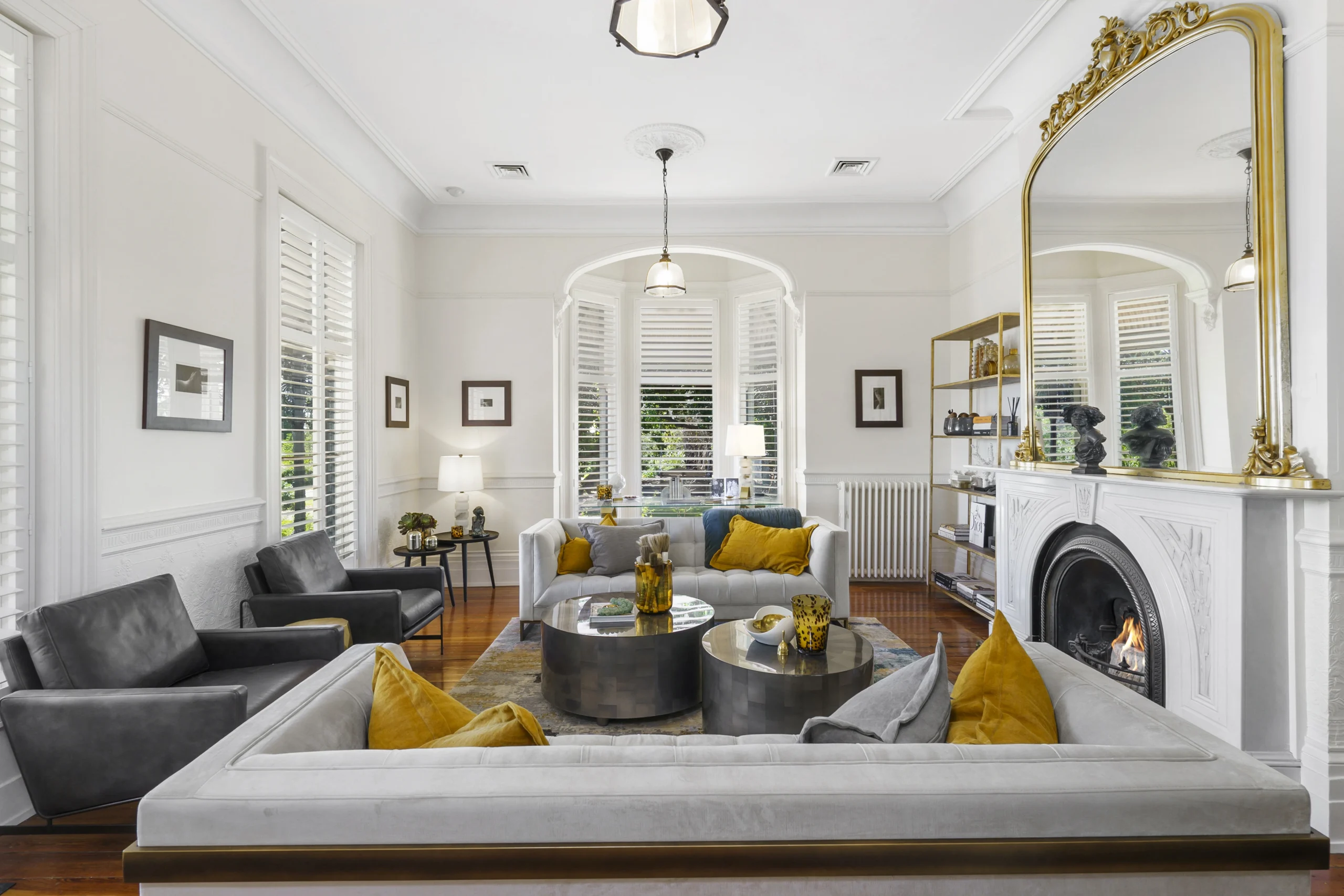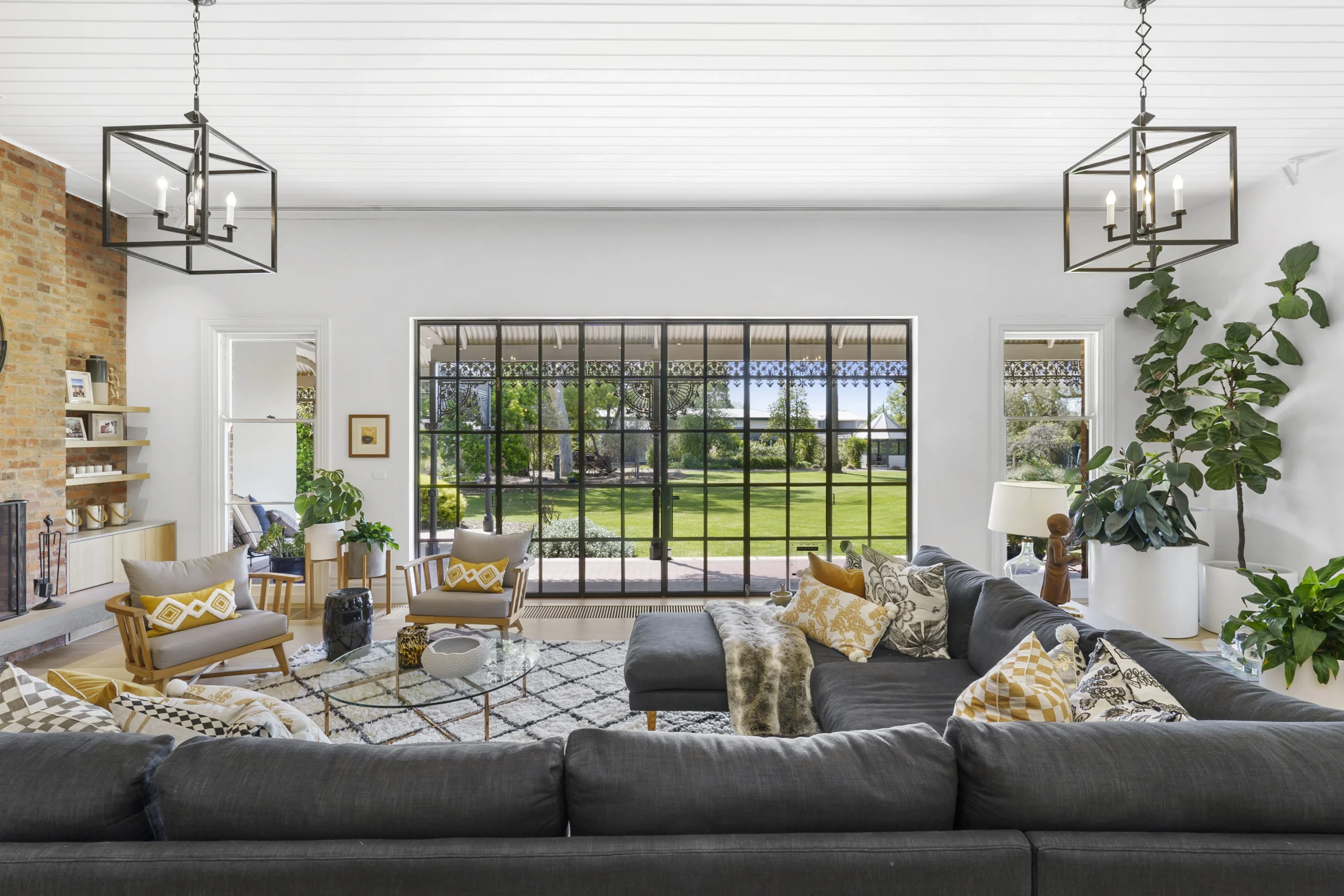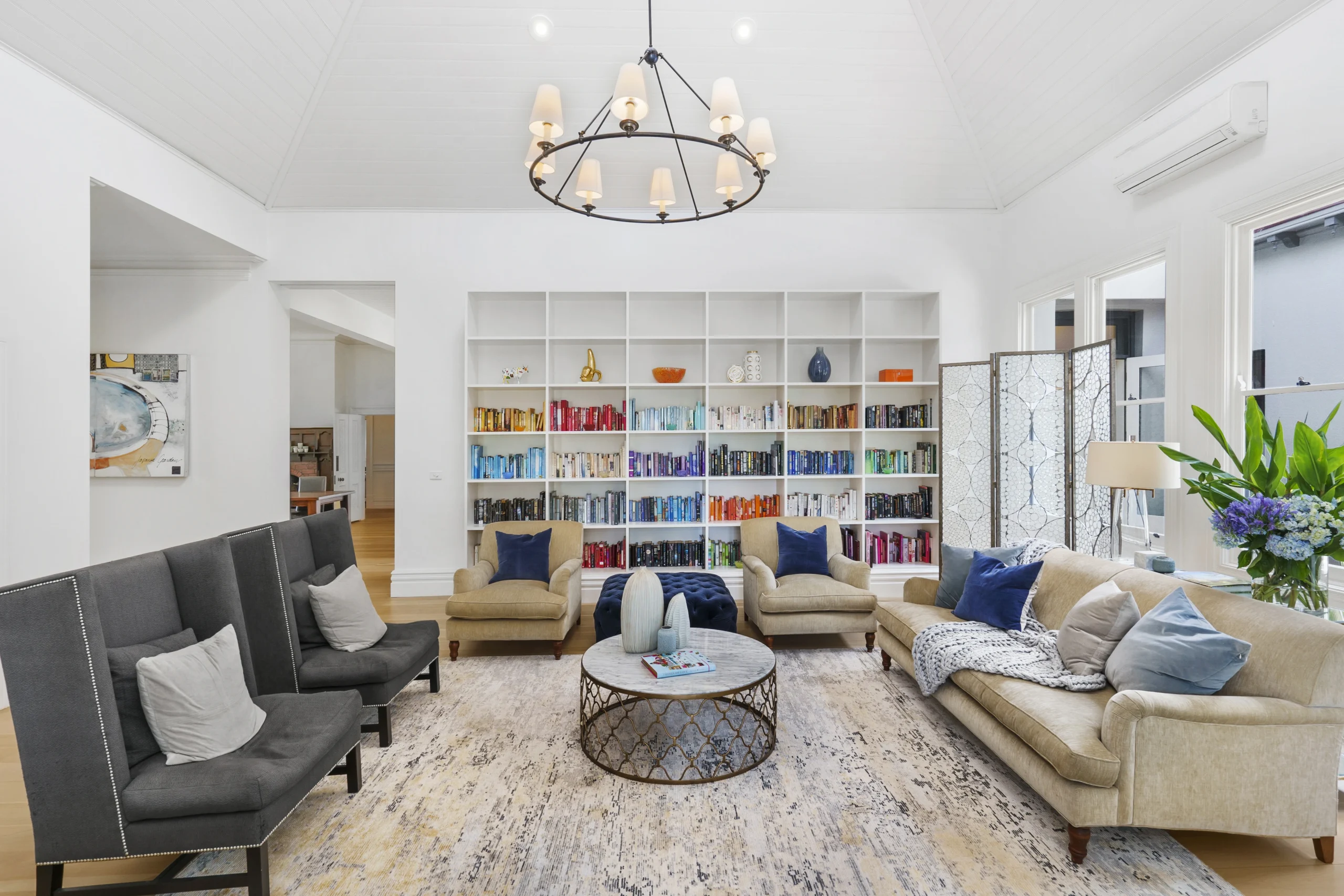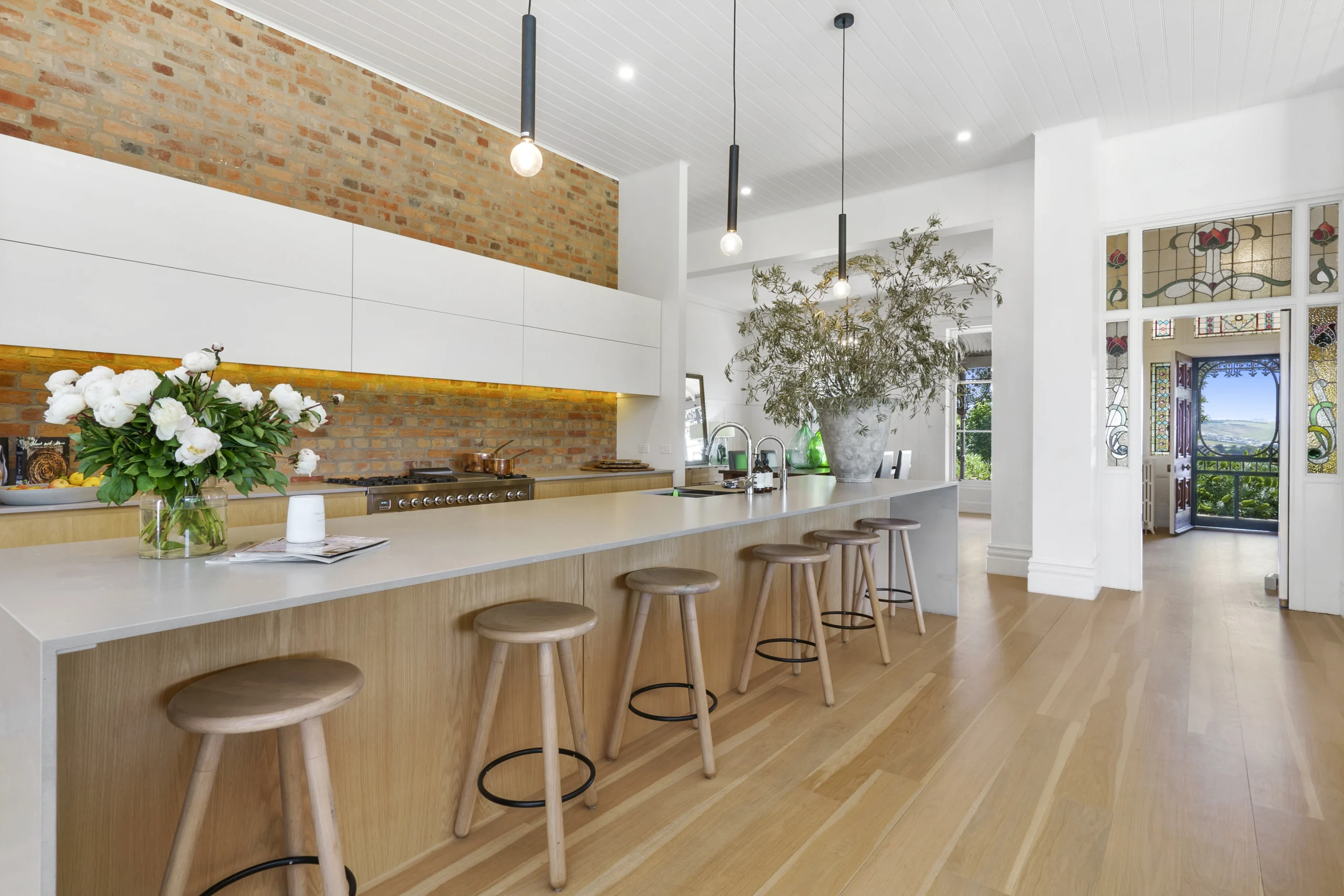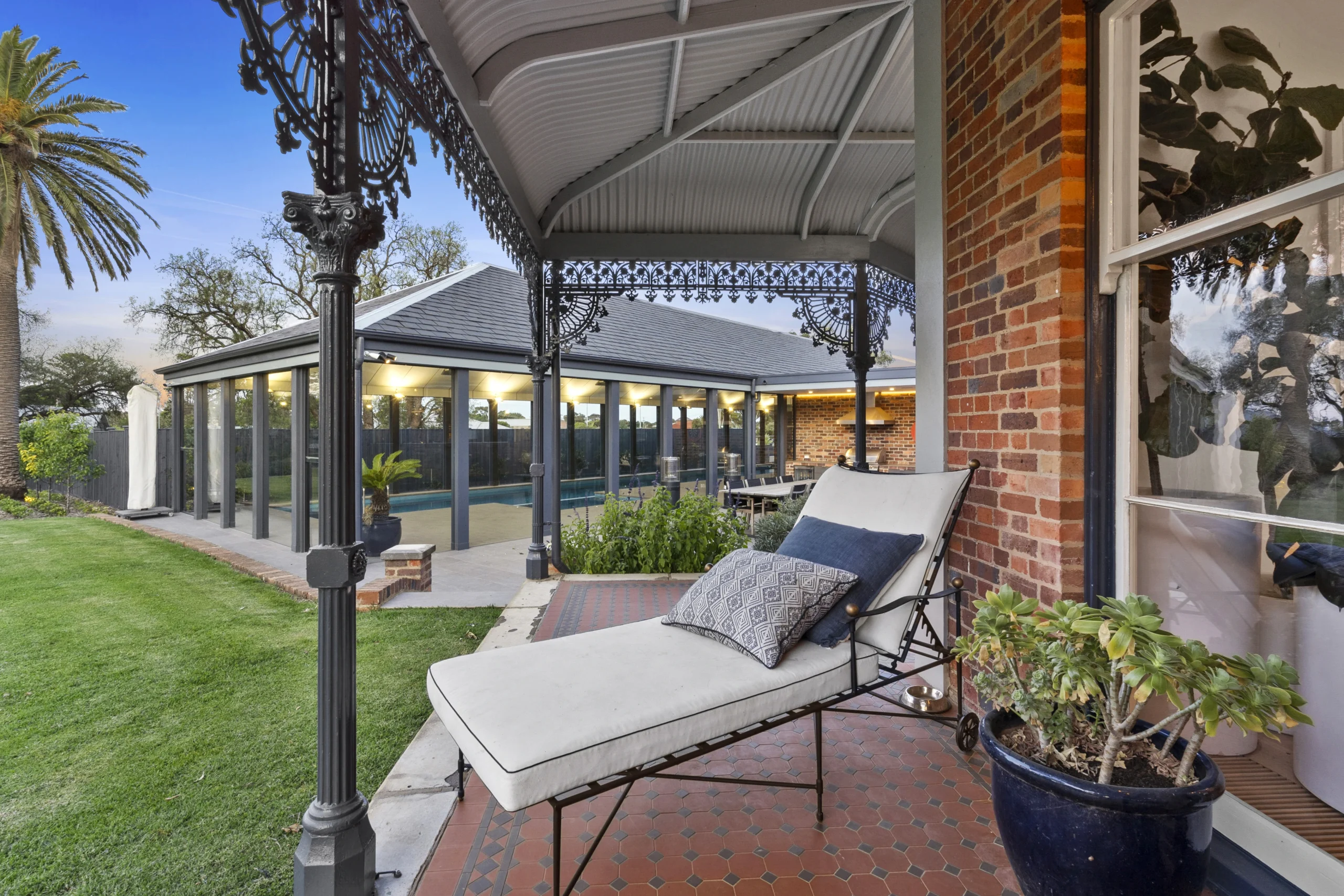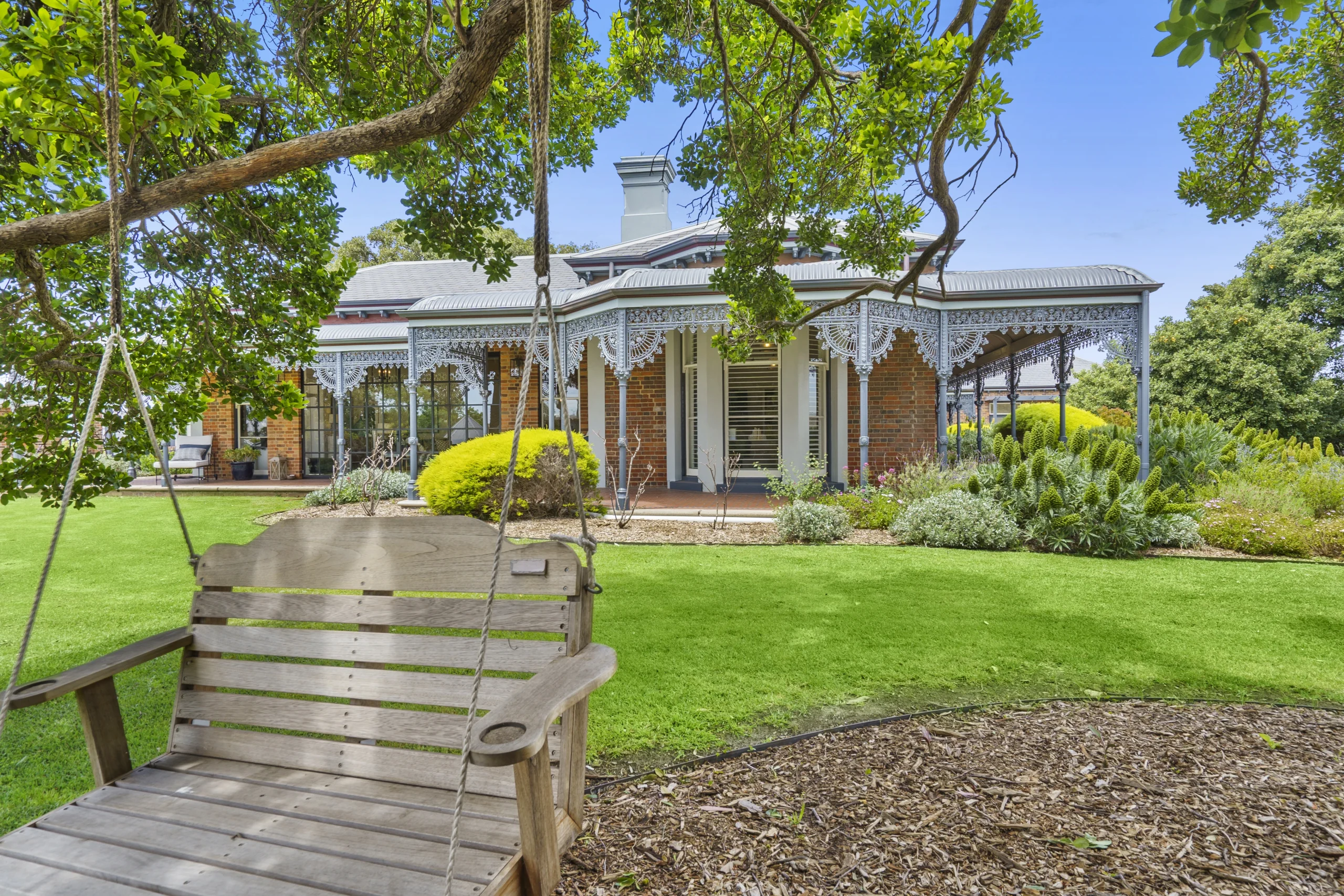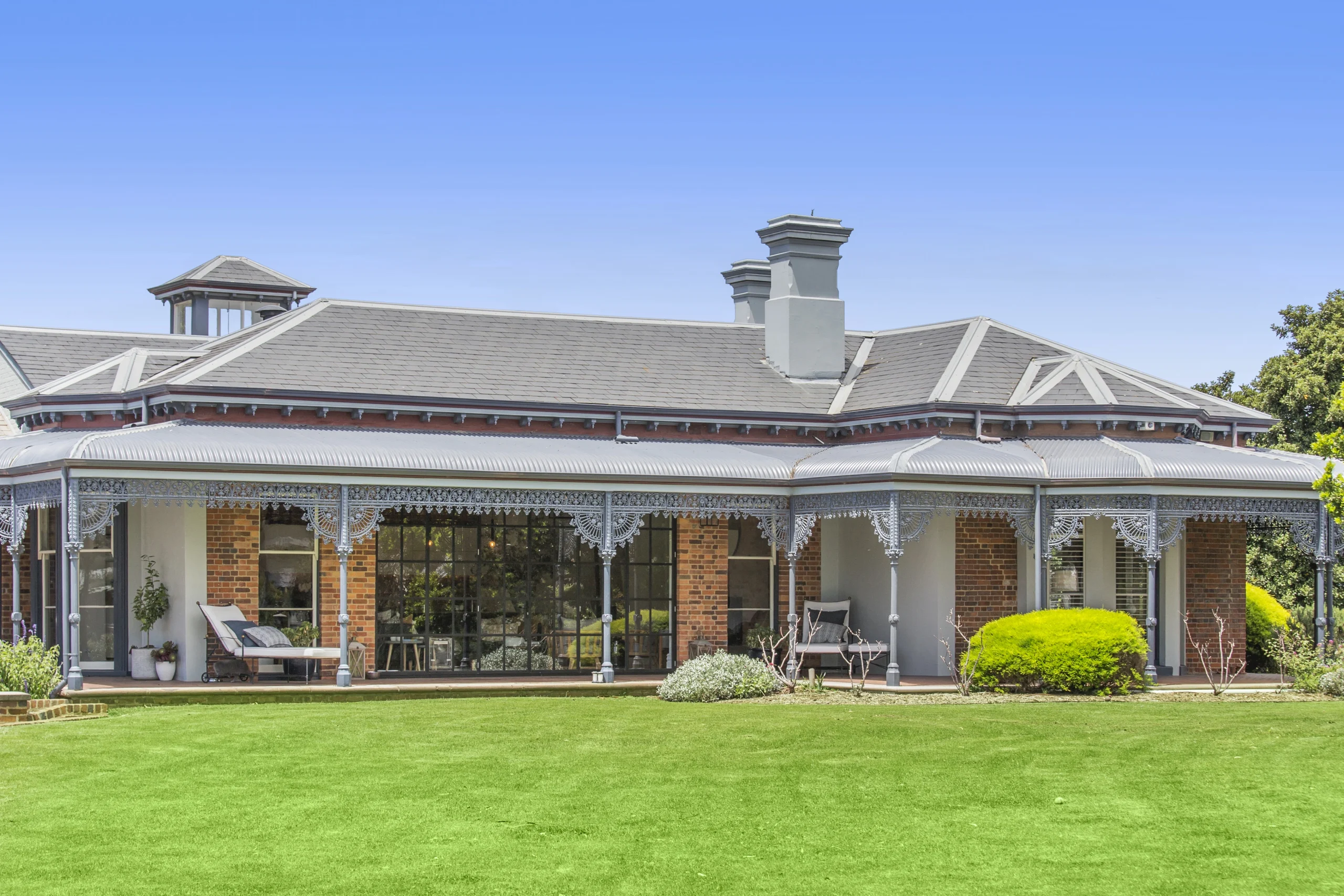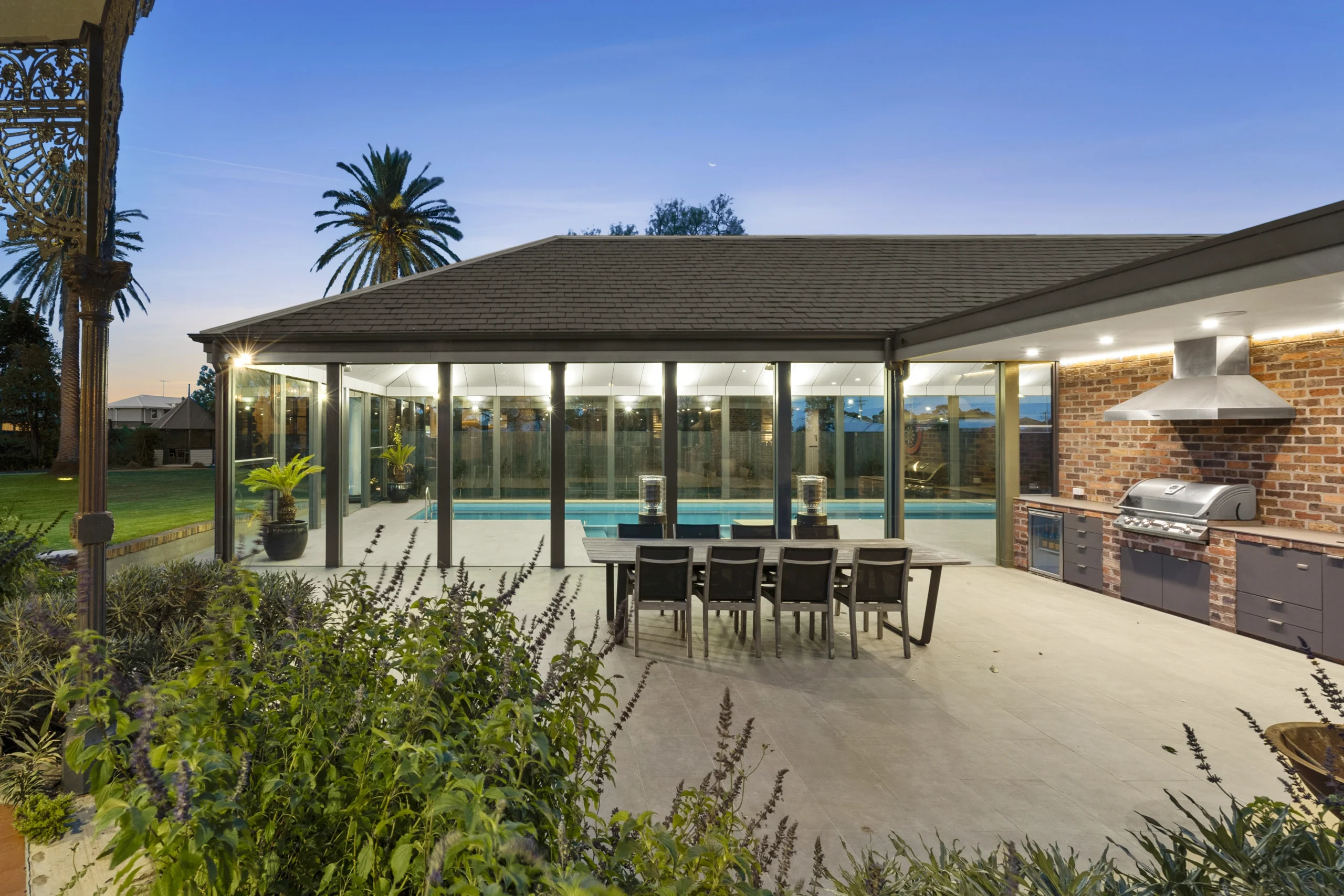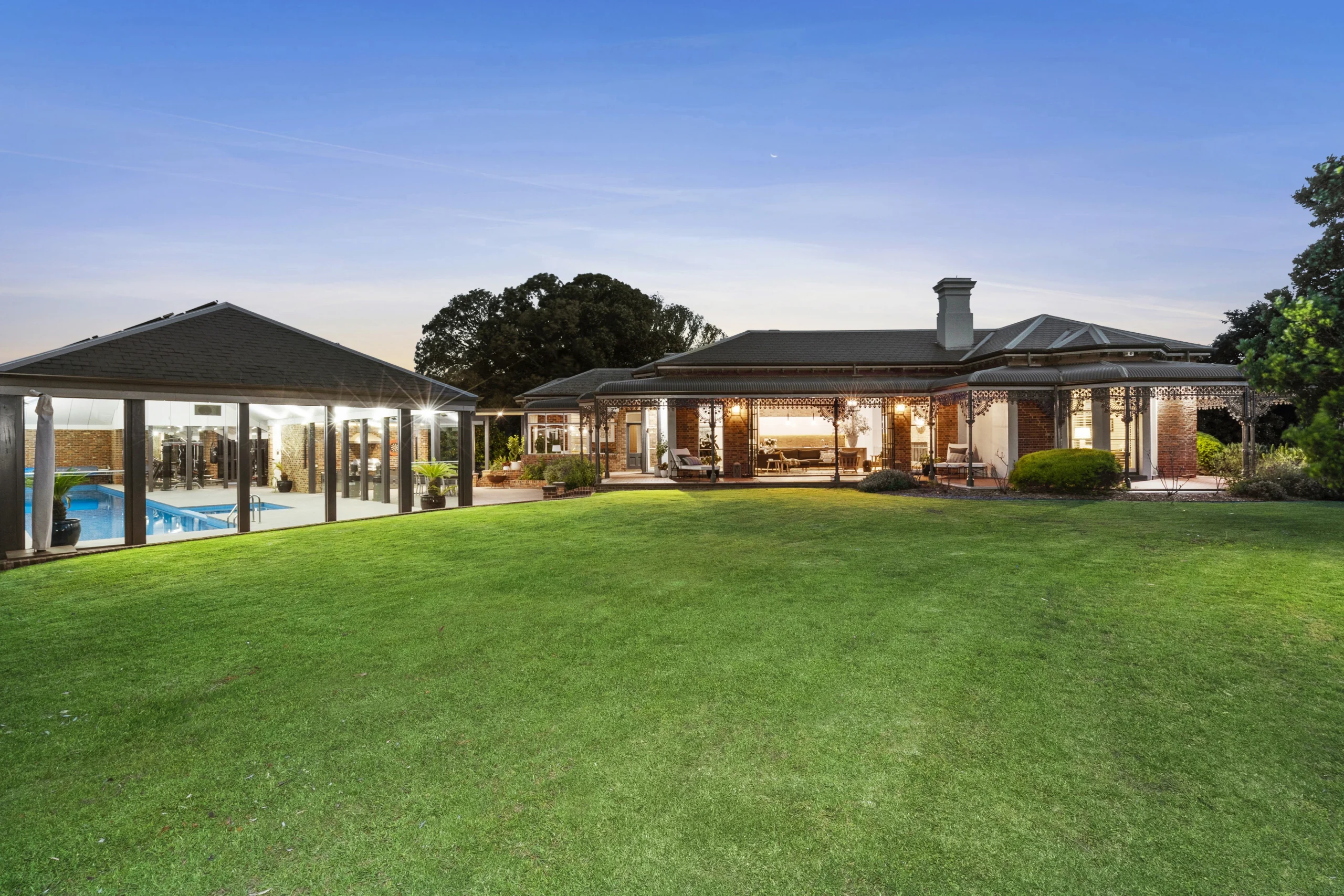Sprawling estate in Geelong has long history
A sprawling estate in Geelong surrounded by picturesque landscaped grounds, Raith has a long history as the home to a local merchant, a former mayor and a popular AFL star.
A sprawling estate in Geelong surrounded by picturesque landscaped grounds, Raith has a long history as the home to a local merchant, a former mayor and a popular AFL star.
Listed via an expressions of interest campaign with McGrath’s David Cortous, the palatial Victorian-era residence on 6434sq m has come to market with a price guide of between $8.5 million and $9.3 million. If it hits the mark, the sprawling property promises to break its own 2021 price record of $6.3m and hold the title of Geelong’s most expensive home.
Raith, located on Raith Terrace in the heart of scenic Newtown, was also formerly known as Malboona and Atlantis Heights during its 160-year lifespan. Erected in stages, the original modest dwelling was designed by Snell and Prowse Architects in 1864 for Frederic Bauer, an importer and merchant.
By 1881, Geelong architect Joseph Watt designed extensive alterations and additions including an encircling iron veranda for JH Grey, a solicitor at Taylor, Buckland & Gates and nine-time Mayor of Newtown and Chilwell. The colourful character later left Geelong and was eventually arrested in Fiji on a charge of misappropriating the funds of his clients. He was eventually brought back to Sydney and faced charges in Melbourne, according to a 1901 article in the Geelong Advertiser.
Decades later, footballer Bob “Woofa” Davis – affectionately known as The Geelong Flier – lived at Raith. The Geelong Cats player represented the team in the 1940s and 1950s and then went on to coach the Cats in the 1950s and 1960s.
Fast forward to the 21st century, and architect David McDonald curated a modern day extension with sympathetic renovations and a commitment to sustainable design principles.
Today the five-bedroom, five-bathroom homestead with a separate three-bedroom cottage is an idyllic representation of a Victorian estate, blending country elegance with contemporary class.
When it comes to great first impressions, Raith takes the architectural cake. Upon entry there is a grand cathedral ceiling which sets the scene for the remainder of the stately home. All the hallmarks of yesteryear have been carefully retained with stained glass windows, ornate fireplaces and iron lacework.
With such a significant footprint, the house has multiple living zones for either intimate family living or large-scale entertaining.
At centre stage, the open-plan living and dining space houses a state-of-the-art kitchen with stone surfaces, a vast eat-at island, and a big butler’s pantry.
A substantial entertainer’s pavilion opens out to manicured gardens with an additional glasshouse-style wellness zone that is home to a heated 25m swimming pool, plus a sauna, spa, and gym.
In the main bedroom there is a large walk-in wardrobe as well as a luxury ensuite.
A separate wing means children have their own space, complete with a games room and three bedrooms, each featuring walk-in wardrobes and ensuites.
Added extras include a newly renovated office, a music room or fifth bedroom, and an expansive underground wine cellar, hydronic heating and air conditioning throughout, an integrated multi-room Sonos sound system, video surveillance, two four-car garages plus two large storage sheds.
For visitors, or an additional income stream, the property also has a self-contained three bedroom guest house with private veranda.
Raith Terrace is close to Fyansford Common, Queens Park, Elderslie Reserve and local schools.
Raith at 2a Raith Terrace, Newtown is listed with McGrath Geelong agent David Cortous. The price guide is $8.5 million to $9.3 million via an expressions of interest campaign closing on July 21.
Records keep falling in 2025 as harbourfront, beachfront and blue-chip estates crowd the top of the market.
A divide has opened in the tech job market between those with artificial-intelligence skills and everyone else.
The 2026 McGrath Report warns that without urgent reforms to planning, infrastructure and construction, housing affordability will continue to slip beyond reach for most Australians.
Australia’s housing market has reached a critical juncture, with home ownership and rental affordability deteriorating to their worst levels in decades, according to the McGrath Report 2026.
The annual analysis from real estate entrepreneur John McGrath paints a sobering picture of a nation where even the “lucky country” has run out of luck — or at least, out of homes.
New borrowers are now spending half their household income servicing loans, while renters are devoting one-third of their earnings to rent.
The time needed to save a 20 per cent deposit has stretched beyond ten years, and the home price-to-income ratio has climbed to eight times. “These aren’t just statistics,” McGrath writes. “They represent real people and real pain.”
McGrath argues that the root cause of Australia’s housing crisis is not a shortage of land, but a shortage of accessibility and deliverable stock.
“Over half our population has squeezed into just three cities, creating price pressure and rising density in Sydney, Melbourne and Brisbane while vast developable land sits disconnected from essential infrastructure,” he says.
The report identifies three faltering pillars — supply, affordability and construction viability — as the drivers of instability in the current market.
Developers across the country, McGrath notes, are “unable to make the numbers work” due to labour shortages and soaring construction costs.
In many trades, shortages have doubled or tripled, and build costs have surged by more than 30 per cent, stalling thousands of projects.
Need for systemic reform
McGrath’s prescription is clear: the only real solution lies in increasing supply through systemic reform. “We need to streamline development processes, reduce approval timeframes and provide better infrastructure to free up the options and provide more choice for everyone on where they live,” he says.
The 2026 edition of the report also points to promising trends in policy and innovation. Across several states, governments are prioritising higher-density development near transport hubs and repurposing government-owned land with existing infrastructure.
Build-to-rent models are expanding, and planning reforms are gaining traction. McGrath notes that while these steps are encouraging, they must be accelerated and supported by new construction methods if Australia is to meet demand.
One of the report’s key opportunities lies in prefabrication and modular design. “Prefabricated homes can be completed in 10–12 weeks compared to 18 months for a traditional house, saving time and money for everyone involved,” McGrath says.
The report suggests that modular and 3D-printed housing could play a significant role in addressing shortages while setting a new global benchmark for speed, cost and quality in residential construction.
Intelligent homes
In a section titled Weathering the Future: The Power of Smart Design, the report emphasises that sustainable and intelligent home design is no longer aspirational but essential.
It highlights new technologies that reduce energy use, improve thermal efficiency, and make homes more resilient to climate risks.
“There’s no reason why Australia shouldn’t be a world leader in innovative design and construction — and many reasons why we should be,” McGrath writes.
Despite the challenges, the tone of the 2026 McGrath Report is one of cautious optimism. Demand is expected to stabilise at around 175,000 households per year from 2026, and construction cost growth is finally slowing. Governments are also showing a greater willingness to reform outdated planning frameworks.
McGrath concludes that the path forward requires bold decisions and collaboration between all levels of government and industry.
“Australia has the land, demand and capability,” he says. “What we need now is the will to implement supply-focused solutions that address root causes rather than symptoms.”
“Only then,” he adds, “can we turn the dream of home ownership back into something more than a dream.”
Records keep falling in 2025 as harbourfront, beachfront and blue-chip estates crowd the top of the market.
A 30-metre masterpiece unveiled in Monaco brings Lamborghini’s supercar drama to the high seas, powered by 7,600 horsepower and unmistakable Italian design.










